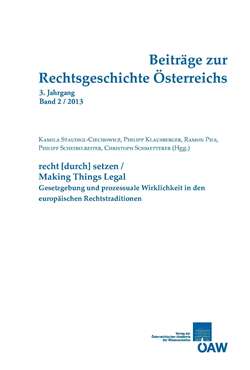
Beiträge zur Rechtsgeschichte Österreichs 2 / 2013, pp. 553-560, 2014/01/30
recht [durch] setzen - Making Things Legal.
Gesetzgebung und prozessuale Wirklichkeit in den europäischen Rechtstraditionen

The edicts constituted the most distinguished form of prefectural legal settlements in Egypt. They usually followed the same scheme, which is evident from the edict of Titus Honoratus, published as P. Oxy. XXXIV, 2704. This edict prescribes measures against persons who allow livestock to graze on someone else’s field, thereby damaging the crops. The standard edict contains the prescript, followed by the main body of the edict. The date would be stated at the end and it followed the Egyptian calendar. The regulations contained in the exemplary edict are slightly illustrated by two papyri – P. Cair. Isid. 78 and P. Mert. II, 92 which, in particular, sheds light on the provisions governing the penalty contained in the edict. It is still not entirely clear to what situation the edict refers but an analysis of the language used in it and in other documents indicates that it applied to the situation where the humans, rather than the animals, were responsible for damages.